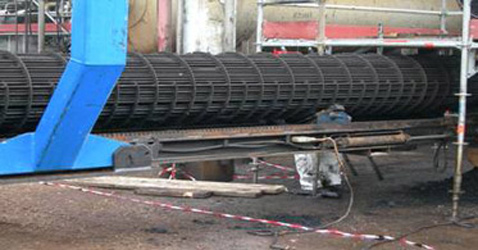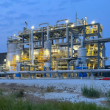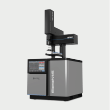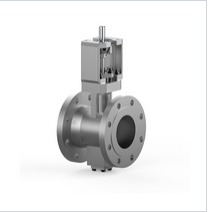Oct-2018
Process development for Tier 3 low sulfur gasoline
Gasoline sulphur is being reduced in the United States to meet the EPA’s Tier 3 standard which requires an annual average of 10 ppm sulphur by 2020.
George Hoekstra
Hoekstra Trading LLC
Viewed : 3098
Article Summary
In 2015, anticipating a need for better data to help refiners make decisions, Hoekstra Trading and C Solutions Ltd. sponsored a three-year research program to improve the understanding of the gasoline desulphurisation process and the economics of Tier 3 gasoline. This overview of the three-year project is presented in three parts:
• The business case
• The process development project
• Tier 3 strategy and economics.
The business case
Gasoline sulphur in North America
Gasoline sulphur reduction toward 10 ppm has been slow in North America. Figure 1 shows the US average ppm sulphur in gasoline which, by regulation, has been 30 ppm max since 2012.
EPA gave the industry six years to achieve a 10 ppm sulphur average by 2020. The chart shows that sulphur has been creeping down by 2 ppm per year. But this still leaves a gap of 14 ppm more sulphur removal to be accomplished by 2020.
Refiners will be taking steps to close that gap to zero during the next year.
Octane
When refiners desulphurise their gasoline to 10 ppm, octane will be destroyed for reasons explained below. We will see, in the next 18 months, a large reduction in the octane supply capacity of North American refineries.
The demand for octane in the US, and the octane price, continue to rise. Figure 2 shows the US premium – regular retail price differential, which is the average pump price of high-octane gasoline minus the price of regular gasoline.
For decades, the premium-regular retail price differential was 10 cents per gallon in the United States but things have changed. The premium differential has risen steadily, and this trend is unlikely to be reversed in the foreseeable future. The differential where I live, near Chicago, was $1/gallon in the summer of 2018.
North American refiners still have a long way to go to meet the Tier 3 sulphur requirement. Gasoline sulphur must still go down a lot, and that means octane supply will go down, and octane cost will go up, while octane demand and octane price are also going up.
This is why we believe an octane/sulphur squeeze is coming in North America.
The process development project
Foreseeing this in 2015, Hoekstra Trading, C Solutions, and our multi-client group initiated a process development project to better understand the gasoline desulphurisation process, and especially octane loss, in deep desulphurisation.
Pilot plant and laboratory studies of gasoline desulfurization
Ninety-eight percent of gasoline sulphur comes from fluid catalytic cracker (FCC) gasoline. This is the stream that must be desulphurised to reduce the sulphur of blended gasoline from 30 to 10 ppm. In most cases, this is done by fixed-bed, selective hydrotreating of FCC gasoline.
Figure 3 shows the pilot plants in the laboratories of C Solutions Ltd. in Thessaloniki, Greece which our client group used to study the gasoline desulphurisation process. They are essentially small-scale versions of the units that desulphurise FCC gasoline in refineries.
The pilot plant studies showed our clients, for the first time, how much octane will be destroyed when their gasoline is desulphurised to 10 ppm. Figure 4 is a chart of gasoline octane versus gasoline sulphur for the gasoline desulphurisation process. We call this the “performance curve”, because it shows the most important performance feature of the process which is to remove sulphur with minimum octane loss. The higher the performance curve, the better.
As we move to the left on this chart, increasing reaction severity, we are removing the slowest-reacting sulphur compounds to get down below 10 ppm, and the octane loss accelerates. This is because high-octane olefins are being saturated to low-octane paraffins, in parallel with sulphur removal.
Historically the process has operated in the “normal operating window “, in the upper right part of the chart where octane loss is moderate. The acceleration of octane loss at low gasoline sulphur is much greater than was anticipated when the Tier 3 standard was set. This means full implementation of the Tier 3 standard will reduce the US octane supply by more than has been expected.
Commercial field tests
We then worked with several refiners doing commercial field tests to determine whether this also occurs in commercial gasoline desulphurisation units.
A key part of the pilot plant and field tests is a detailed chemical analysis that quantifies the amount of every compound in gasoline. We have measured 759 different compounds in gasoline streams. Doing the 759-compound analysis on feeds and products shows exactly what chemistry is happening in the desulphurisation reactor. We ran the test on feeds and products from all our pilot plant tests, and from field tests on 10 commercial units.
In Figure 5 we see the wt% olefins distribution, charted vs. carbon number, for a feed (the blue curve) and the product (the orange curve), for one of those units.
Olefin conversion is occurring across the full range of carbon numbers. The total conversion is 51 wt% and the octane loss is 7 RON which is more than this refiner can afford to lose. This refiner is making a capital investment to reduce octane loss.
Figure 5 shows the olefins distributions for another unit, this one is experiencing 25% olefin conversion and 2 octane loss.
The chart shows the reason for lower octane loss on this unit, it is because the C5 olefins are not being converted. In this unit, the C5-olefins are split out and bypass the desulphurisation reactor, saving octane.
The field tests confirmed the pilot plant studies, showing that the octane loss for Tier 3 sulphur will be much more than has been expected.
Tier 3 gasoline strategy and economics
Our pilot plant studies, field tests, and detailed chemical analyses produced a powerful new database for refiners who want to improve their Tier 3 gasoline strategy. To provide good tools for easy use of the new information, we developed three spreadsheet models.
Sponsor:
Add your rating:
Current Rating: 3

















